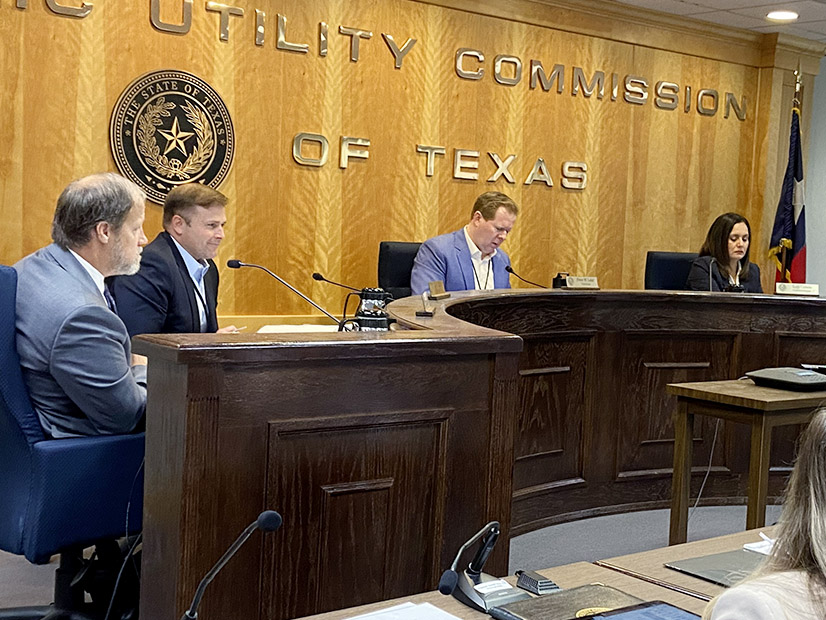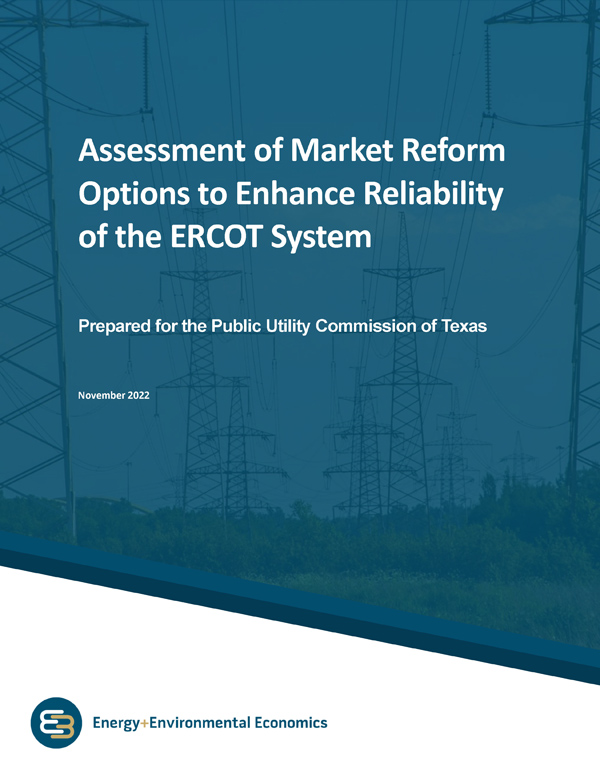
Texas regulators have received almost 120 comments from ERCOT stakeholders and the public about their proposed market redesign, feedback they will review and discuss before turning over their final recommendation to lawmakers next year.
From global energy powerhouses like Shell Energy, to individual ratepayers, commentators have given the Public Utility Commission hundreds of pages for their holiday reading pleasure. Stakeholders had 35 days to file their comments before a Thursday deadline (54335).
The comments echo those made by lawmakers during recent public hearings: The PUC’s preferred market design is too complicated and an unknown among other grid operators. There is no reliability standard. It won’t attract new baseload generation to Texas.
A San Francisco-based energy consulting firm spent several months modeling and analyzing market designs proposed by the PUC following public work sessions after the deadly 2021 winter storm nearly collapsed the ERCOT grid. Energy + Environmental Economics (E3) recommended a forward reliability market construct that relies upon a centrally cleared auction procuring the “requisite” amount of reliability credits.
PUC staff instead urged the commissioners to pursue a performance credit mechanism (PCM) that requires load-serving entities to buy performance-based credits from generation resources in a voluntary forward market. The credits are awarded to resources through a retrospective settlement process based on availability during the 30 hours of highest risk, according to their load-ratio shares during those same periods. (See Proposed ERCOT Market Redesigns ‘Capacity-ish’ to Some.)
Potomac Economics, ERCOT’s Independent Market Monitor, said it found the PUC’s first phase of market changes to be “far more effective and more sound economically” than the proposals in E3’s report. The early modifications included a 44% reduction in the market’s price cap to $5,000/kWh and shifting the operating reserve demand curve (ORDC) so that the market’s shortage-pricing mechanism increased real-time energy revenues by $1.7 billion this year through November, according to Potomac.
“We continue to believe in the effectiveness of the energy-only market,” the Monitor wrote. “The energy-only market is an effective pay-for-performance mechanism and should be retained in full without adding an unnecessary separate availability payment structure that would be difficult to accurately hedge or predict due to its ex post procurement.”
Potomac recommended against the PUC moving forward with any of its designs, saying the PCM is “a less effective and efficient means to facilitate performance by ERCOT’s generation fleet” than the current construct. It did allow that the PCM would be “less disruptive” to the current market than the backstop reliability service (BRS) mechanism, an ancillary service meeting specific reliability needs during high uncertainty periods.
 ERCOT market participants have plenty to say about a consultant’s report on the ERCOT market’s redesign. | E3
ERCOT market participants have plenty to say about a consultant’s report on the ERCOT market’s redesign. | E3The Steering Committee of Cities Served by Oncor wrote that the PUC’s ultimate goals and principles in redesigning the market remain “unclear.” It called on the commission to direct E3 to revise and expand its analysis, saying the firm’s report is “inadequate as a basis for such a momentous redirection of the state’s and consumers’ energy resources.”
The Texas Public Policy Foundation, a nonprofit organization pushing the oil and gas industries’ interests, took aim at the “overinvestment” in renewable energy, saying any new market design needs to also address “underinvestment” in dispatchable generation.
“Any program that only addresses the underinvestment problem is simply countering the federal subsidies for wind and solar with state subsidies for dispatchable generation and will lead to skyrocketing costs for ratepayers,” the foundation said.
The PCM also has its supporters. Vistra and NRG Energy, the state’s two largest generation owners, favored the PUC’s recommendation.
The R Street Institute — a nonpartisan, public policy research organization that last year pushed its own version of the PCM — called the PUC’s preferred design a “workable framework” that will add “additional incentives for installed [reserve] capacity.”
The Texas Competitive Power Advocates (TCPA) — a trade association representing generators, wholesale marketers and retail providers — said it stands ready to bring more than 4.5 GW of additional generation to ERCOT if the PCM is adopted under the “right framework.”
“The E3 report demonstrates that the status quo energy-only market will not incentivize sufficient new generation or retain sufficient existing generation to ensure resource adequacy and reliability outcomes acceptable to Texans,” TCPA Executive Director Michele Richmond wrote. She said the PCM will meet the objectives of legislation passed year that requires a reliability standard for the grid and a market design ensuring reliability during extreme weather and periods of low non-dispatchable power.
“The [PCM] can achieve this; alternative and unstudied half-measures cannot,” Richmond said. “Nor can state-subsidized generation or loan programs, which may marginally reduce the cost of new generation but would also accelerate the retirement of the gas generation that kept the power on this summer.”
The PUC has scheduled a work session on Jan. 12 to discuss the design proposals and stakeholder feedback. A vote is not expected on the proposals during that meeting, but a plan is expected to be adopted later in the month, a commission spokesperson said.
“As [PUC Chair Peter Lake] has repeatedly assured, the commission will continue to work closely with the legislature on this important issue,” Rich Parsons said in an email to RTO Insider.
ERCOT’s Kenan Ögelman, vice president of commercial operations, said it will take at least 1.5 to 2.5 years and up to $4 million to implement the PCM, assuming the project can be done concurrently with the delayed real-time co-optimization (RTC) market tool’s development. He said that estimate is in addition to at least six months to write the necessary rules and protocols.
In comparison, delivering the BRS will take between 15 months and 2.5 years, Ögelman said. Again, this assumes the design’s work will be managed alongside that of the RTC tool. (See ERCOT Technical Advisory Committee Briefs: Dec. 5, 2022.)
“There is significant overlap in the systems that would be impacted by implementation of PCM and BRS, as well as the employees who would be needed to work on those projects,” Ögelman wrote. “As such, a decision to implement one program would significantly impact the timing of when the second program could be delivered.”



